- Home
- Resurrection ▾
-
Learn ▾
- Free library
- Glossary
- Documents
- Initiation
-
Shaped fabrics
- Introduction
- Popularization
- Definitions
- Le métier de façonné
- Principes du façonné
- Mécaniques de façonné
- Le jeu des crochets
- Les cartons
- Chaîne des cartons
- Mécanique 104 en détail
- Pour en finir
- Montage façonné
- Empoutage 1/3
- Empoutage 2/3
- Empoutage 3/3
- Punching, hanging and dip
- Autres façonnés
- Façonnés et Islam
-
Cours de tissage 1912
- Bâti d'un métier
- Le rouleau arrière
- Les bascules
- Formation du pas
- Position de organes
- Mécanique 104 Jacquard
- Fonctionnement 104
- Lisage des cartons
- Le battant du métier
- Le régulateur
- Réduction et régulateur
- Mise au métier d'une chaîne
- Mise en route du métier
- Navettes à soie
- Battage
- Ourdissage mécanique
- Préparation chaînes et trames
- Equipment ▾
- Chronicles ▾
- Fabrics ▾
- Techniques ▾
- Culture ▾
- Language ▾
Pomegranate bark was used for tanning and dyeing leather. Thus it is she who, with etching with alum, always gives their yellow color to the most beautiful slippers of the Moroccan souks. In India, it is still used for the printing of yellow and brown yellow fabrics with alum etching in black with iron. The colors are strong in the wash and resistant to light. The turmeric dye baths are also supplemented with pomegranate bark and alum (proportion of 2 parts and 1 part and quarter for 5 turmeric) to give the colors more light fastness.
According to the Arab tradition, there is not a single grenade "in which there is a grain of Paradise grenades" or "that has been fertilized by a drop of water from Paradise."
In Persian gallant poetry, Firdousi evokes his beloved, saying "his cheeks are like the flower of the grenadier, and his lips like the syrup of pomegranates, his silver breast grow two grenades."
Formerly, the Oriental storytellers made riddles during the evenings in the moonlight. The story-teller exclaimed: "I am neither king nor queen, I wear the crown." And before the puzzled silence of the audience, he was thundering: "It's the grenade!"
In some countries, the bride throws a grenade on the ground to make her "explode" and depending on the number of seeds that escape her, she tries to find out how many children she will bear.
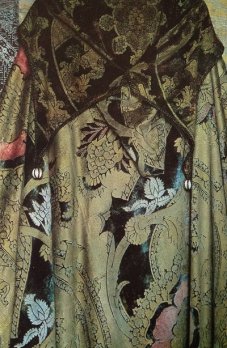
Arab culinary influence was achieved through the relays that were Sicily and Christian Spain from the Maghreb and al-Andalus. In several Italian recipe books of the 13th and 14th centuries, there are recipes of romania, grilled chicken with an Arabic inspiration according to the type of cooking and flavor and according to the appellation. Indeed, grenade is called rumman in Arabic. Spanish recipe books show the same influence by the use of acidic fruit juice, rose water, sugar and almonds. In a Catalan collection of the 14th century, the Sent Sovi, many ingredients as common as marjoram bear names of Arabic origin and it can be seen that the juice of pomegranate, magrana, lemon juice, limona, juice Bigarade, toronja are very often used for the preparation of sour sauces. In his opusculum of saporibus, Magninus of Milan in the 14th century sees no objection to the use of these juices, even if he places himself from a dietary point of view, he advises "that the matter of sauces in summer is Verjuice or juice from the tops of the vine, or lemon or orange juice or pomegranate. "Outside the summer period, he advises them to moderate by their coldness the heat of the spices and to To carry the benefits in all the folds of the organism.
In 1656 Pierre de Lune presents himself as an old "cooking squire" by the late Duke de Rohan who, the first who seeks to supplant La Varenne, enumerates in the preface of his work Le Cuisinier a list of ingredients that any good cook Which self-respect must always have on hand. These include pomegranate seeds, capers, olives, chopped and chopped pistachios, oranges in quarters, slices of lemon kept fresh in a bowl of water, as well as fried parsley, Beaten egg, and a roux made of lard and flour.
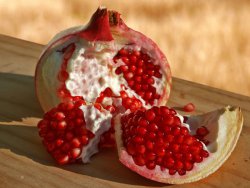
For centuries, there has been a lot of empiricism and trial and error to improve the species. The Arabs commonly practiced the graft, but in our country we also resorted to methods which are more a matter of sympathetic magic than of agriculture. The water of the sweet grenadiers was watered with sweet and juicy grenades, and with blood to make them very red.
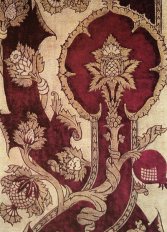
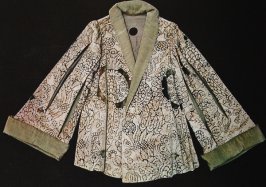
According to Paracelsus, "All that nature creates, it forms it in the image of the virtue which it intends to attach to it." It is the "theory of Signatures" which requires that the resemblance, whether of form, color, odor or consistency, will determine the adequacy of a remedy. The seeds of the pomegranate resembled teeth by their appearance and disposition in the pulp of the fruit, so it was advisable to chew them against toothache. The juice of the pomegranate is red like blood, so it was already recommended by medieval herbalists against traffic disorders and to stop bleeding, just like blood-red bloody flowers. Bharthelemy writes that "The pomegranate flower, called balanstric, which is cold and dry, holds the flowers of women. With sour wine on the breast prevents the vomiting which comes from the angry cause." Conversely, always because of its red color that evokes menstrual blood, the grenade like the stems of mugwort or rhubarb which are also red were given to young girls of puberty age, because the event was expected Impatiently and who "Who does not blossom, seed" said the saying. Sterility was a curse always attributed to women, and to defeat it, women absorbed decoctions of pomegranate, wormwood or chaste tree, and they placed poultices of these plants picked on the day of Saint John on their genitals and on The lumbar region.
It was in Italy, Europe's most culturally advanced country in the Middle Ages, that the European silk industry developed and that in the fifteenth century the technique of genuine damask was created. His appearance had a considerable influence on the creation of the new motifs that were to emerge during the Renaissance. Among the most important, the pomegranate was to have a very unusual success in many countries. It is a figure with clear contours, well suited both to the damask weave and to that of another great novelty of the time, the velvet, both of which are used both for clothing and for interior decoration. There are variants of the pattern of the pomegranate on the upholstery of the 18th century and until 1900 when the Englishman William Morris composed on jacquard loom Italian silk damask for a reasonable cost price.
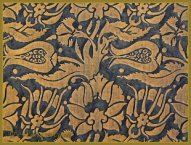
Alexandre Dumas does not show himself tender towards the grenade in his dictionary. He writes: "... this fruit is little sought after outside the country where it is collected and serves only to garnish dessert baskets where it is of the most beautiful effect." And he takes himself behind the prejudices of a certain M. Cohier de Lampier, who says: "There are no beautiful dessert baskets without grenades, no oranges, the open grenade, and a rich treasure of rubies or brilliant garnets, is one of the most When we do not perceive some of these pomegranates half open on the sides of a pyramid of fruit, they can not be replaced by any other, and although the vermilion of More beautiful apples and the enamel of our big pears, the gold of the orange and the supreme beauty of the pineapple, it seems that something is missing in this basket offered by the god Vertumne at the court of Pomone, but we must admit that with the exception of this bea A role for the decoration of tables or buffets, the pomegranate, is a fruit which is not equivalent to the currant, it is only worth the barberry, and it is to be agreed that it is almost good at Nothing in temperate countries where the four red fruits are abundant and par excellence. "

The symbolic significance of the pomegranate
The pomegranate is one of the oldest symbols of prosperity, fertility and renewal, an inexhaustible source of decorative motifs from our shores to the depths of Asia or Africa. It was known in India before the arrival of the Aryans. Harappa excavations found clay pots from 2000 BC in the form of a pomegranate.
From the 18th dynasty, thanks to the exchanges with the neighboring countries, the Egyptians began to cultivate trees unknown until then such as the grenadier, the olive tree or even the apple tree. They buried these fruits with the dead and

Originally from western Asia, wild from the southern Caucasus to Punjab, grenadier was propagated by man in ancient East Asia and Asia Minor, and later in the Mediterranean countries. As its botanical name, Punica granatum, indicates, it was first adopted by the Phoenicians, who made it known to the Carthaginians. The Romans believed the grenadier originally from Carthage from where they brought him back during the Punic Wars and introduced him into the Roman world. The Arabs have so planted grenadiers in the south of Spain from the 8th century onwards that the city of Granada bears the name of this fruit so beloved of the Moors. Grenadiers are small, deciduous, simple, opposite, whole, shiny trees that grow today in all tropical and subtropical regions. They carry flowers, with two verticelles of petals, orange red solitary, or grouped by two or three, very ornamental. The large fruits whose leathery skin varies from yellow to sustained red are sweet, sweet-sour or sour depending on the variety. The seeds, agglutinated together, housed in compartments delimited irregularly by a network of partitions, are coated with a fleshy mucilaginous flesh, transparent and slightly pink. They are rich in vitamin C, citric acid, minerals, such as sulfur, phosphorus and potassium.
Pomegranate Pattern - Punica granatum
Origin of the Pomegranate
Grenade carved velvetAgnès Alauzet, Lyon

Pomegranate PatternPunica granatum
French: motif à la grenadeGerman: granatapfelItalian: melogranataSpanish: granadaChinese: shiliu
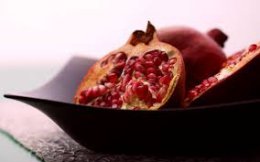
The pomegranate seeds were also used for decoration at banquets. In the Satiricon, we see that at the table of Trimalcion the red of the seeds of grenades and the black of the prunes simulated embers and charcoals. "There were also boiling sausages placed on a silver grill and, under the grill, Syrian prunes with grains of pomegranate."
Her red flowers being the emblem of a burning love, the young brides wore them in their head-dresses.
Ancient Egyptians already knew the deworming effects of the pomegranate bark. Ancient medicines considered it an anthelmintic and all took advantage of the astringent effect of the tannin contained in the bark, the flower and the fruit of the grenadier. That of the sour fruits was prescribed as febrifuge and antivomitive, that of the sweet fruits as softener for the cough.